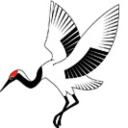Yahoo Answers is shutting down on May 4th, 2021 (Eastern Time) and beginning April 20th, 2021 (Eastern Time) the Yahoo Answers website will be in read-only mode. There will be no changes to other Yahoo properties or services, or your Yahoo account. You can find more information about the Yahoo Answers shutdown and how to download your data on this help page.
Trending News
if there is no stance to be used in karate what did choki motobu mean by this?
"Twisting to the left or right from the Naifuanchin stance will give you the stance used in a real confrontation."
was he lying?
I meant no stances are used in fighting sorry for the misunderstanding everyone.
9 Answers
- 9 years agoFavorite Answer
I was taught that the framework found in basic lessons as learned by a student practitioner exists to map out effective variations. In the quote above, Motobu is applying what is a fairly rigid front facing stance to the dynamic conditions as you'd find in the seedier districts of Naha.
I am not sure that he meant or that anyone means to say there is "no stance ... in karate." I teach stances as the 'end point' of most techniques. Between such end points you have the need to gap close, to distance, to bypass, and to trap. Your legs move to support these tactics, and when hard stylists start to think about this (like how you are doing so now), there is good opportunity to raise their karate to a higher level.
BTW, have you gone into a deeper stance ala Tekki and turned to body to your left and right? You'll then find yourself in another stance similar to what you'd have when you do an oizuke. Each 'slice' in the turn is as applicable as the end point as a 'stance.'
Good luck!
Source(s): 29 years of training. - ?Lv 45 years ago
As Kokoro responded, they did not have a lot use for another. Motobu replaced right into a popular highway fighter in Okinawa and Funokoshi replaced into one which not in any respect needed sparring or any type of hand accessible wrestle in his instructions. He maintained that some plausible get badly damage or killed by technique of the recommendations. On more desirable than one celebration Motobu took it on himself to embarrass Funokoshi. Motobu concept that what Funokoshi taught replaced into tender and that he couldn't wrestle or might want to't wrestle even as challanged by technique of Motobu.
- idaiLv 59 years ago
Hi there
Stances as they are taught are just a static snap shot of a moment in time. As a single stance they reveal nothing and show you nothing. But a complete set of stances moved through in the correct order depeding on the situation will put you in a safer place with distance, give you grounded footing, provide a guard and allow you to do what ever is necessary in that moment.
He wasnt lying.
We all have different eyes and we all see things differently with what experience we have.
Best wishes
idai
- 9 years ago
Kokoro there gets my vote and maybe I can shed a little more light on this for you along with his answer. This stance goes hand in hand with what is often referred to as the "empty mind" theory. One of the ideas behind that theory refers to your mental state and by having an empty, clear mind you can more easily see and recognize your opponents actions and attack and then are more likely able to react correctly to his attack and countering it effectively. Not having an empty or clear mind and instead being predisposed to his attack in some way might make you more vulnerable especially if you are anticipating the type of attack incorrectly.
The other part of this is having your feet underneath you with your weight and balance consolidated under you so that you can more easily move correctly when reacting to the attack. You also only have to move, twist and turn a little to make that attack ineffective while leaving you close enough to counter attack. You do this by stepping forward or backward slightly with one foot and turning as you bring your trailing foot up under you again with your balance and weight consolidated under you and can also continue instead into something else to fit the situation and attack as needed. Correctly positioning yourself in relation to your adversary and the attack is what this teaches and emphasizes and having the ability to do so.
This is one of those traditional concepts and ideas that I sometimes teach fighters about and them understanding how to use angles better and countering when their opponent attacks. You often hear for instance in boxing a coach screaming at his fighter to move to the right to more easily avoid his opponent's strong right hand when both are fighting out of a conventional left hand lead. Doing this starts with that fighter moving his back foot just a little over to his right and sometimes forward even giving him an angle to attack on while also making it harder for his opponent to hit him cleanly with his right hand.
There is a question currently about stances and why you don't see them used in MMA and fighting. If you read most of the answers you will see that you don't actually use a stance per say in actual application but instead a lot of what that stance teaches and emphasizes. Your question really touches on this a lot and hopefully I have added something to Kokoro's answer here to help you understand some of this more easily or better and as it applies in actual application.
- How do you think about the answers? You can sign in to vote the answer.
- ?Lv 59 years ago
Just as in swordsmanship, there are no stances. The minute you fixate yourself to one position, you risk injury.
Motobu 's movements were all very short, no expansive steps, nothing. Everything kept close so that he could bring his full weapons to bear.
This is opposed to long sparring stances in many Karate orgs.
Very similar to the requirements of footwork in Motobu Udundi.
Source(s): Nidan, Iaido Nidan, Karatedo Shodan, Jujutsu Intermittent training in Udundi and Kempo. - Leo LLv 79 years ago
Not only are stances important, but it is vital that we always remain in a balanced, well-grounded position, even as we transition between stances. We must always be ready to defend, or to take advantage of a lapse in our opponent's defense. We must move continuously, not just forwards and back, but at angles and circling around, always in a proper stance. Shifting sides makes it more difficult for opponents with less ability to maintain proper defenses. Always position yourself to strike. Keep moving until you find a spatial relationship that is unfavorable to your opponent and use your advantage. Shifting from a short stance, like a rear foot or cat stance, to an extended stance, gives us a great way to close distances surprisingly fast. It is about being deceptive, not letting the other guy have any notion of what you are setting him up for.
- JayLv 79 years ago
There are no stances in Karate? This is news to me. Funny how I was taught stances when studying, and even Higaonna Sensei, among others, go into great detail on the importance of stance work in Karate.
- Jim RLv 79 years ago
Of course he was not lying. Stances are one of the most misunderstood parts of martial art. Stances are techniques too, used for shifting weight, applying pressure, and moving fluidly. A shift from zenkutsu dachi (front stance) to kokutsu dachi (back stance) is a very basic example. This shift can be used to trip an opponent, or to break their leg. Your stances are mostly for controlling your weight, and for using that weight to advantage.
- KokoroLv 79 years ago
It goes back to stances are not fixed.
Okinawa's and Japanese have two different thought process in this matter.
If you talk to most Japanese instructors, they are more strict when it comes to stances. Where as okinawa's can be more open.
I asked my okinawa's kobudo instructor once what stance was in a tonfa kata and he told me its what you feel it is.
When you are learning a kata. You learn with a specific stance. When using the kata in combat you use the stance you require for the move, you make adjustments to the way your attacker is moving and compensate for him.
When you can use kata in a fight then you will understand kata.
Kata and applications of kata are not fix they need to be dynamic in the advance levels. In the beginning you may learn a fix application, for training purpose. But as you advance it needs to be natural, it needs to be adjusted, to your opponent.
Source(s): 30 yrs ma








